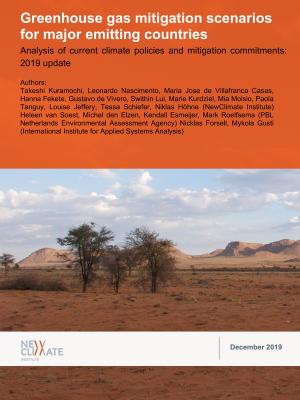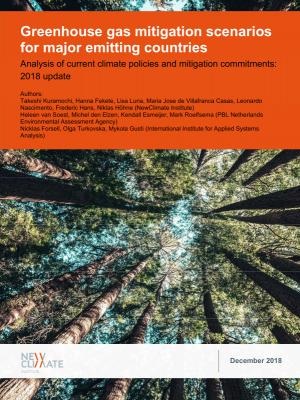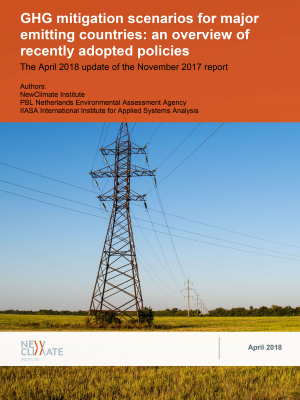This study published in the "Environmental Science & Policy" journal assesses if nine key non-G20 countries meet 2030 GHG targets with existing policies.
Main Findings:
This study compares greenhouse gas (GHG) emissions projections in 2030 under current policies and those under 2030 mitigation targets for nine key non-G20 countries, that collectively account for about 5 % of global total emissions today. These include the four largest non-G20 fossil CO2 emitting Parties to the UN climate convention pre-Paris Agreement (Iran, Kazakhstan, Thailand and Ukraine) and one of the largest land-use GHG emitters in the world (Democratic Republic of the Congo). Other countries assessed include major economies in their respective regions (Chile, Colombia, Morocco and the Philippines). In addition to economy-wide GHG emissions projections, we also assessed the projected GHG emissions peak year and the progression of per capita GHG emissions up to 2030. Our GHG emissions projections are also compared with previous studies.
On economy-wide GHG emissions, Colombia, Iran, Morocco, and Ukraine were projected to likely meet or significantly overachieve their unconditional 2030 targets with existing policies, while DRC and Thailand would come very close to their targets. Kazakhstan and the Philippines would need to strengthen their action to meet their targets, while Chile recently raised its 2030 target ambition. Only Colombia and Ukraine are projected to have peaked their emissions by 2030. Per capita GHG emissions excluding land-use under current policies were projected to increase in all countries from 2010 levels by 8 % to over 40 % depending on the country.
While the impact of the COVID-19 crisis on 2030 emissions is highly uncertain, our assessment on the target achievement would not change for most countries when the emission reductions estimated for 2020 in the literature were assumed to remain in 2030. The findings of this study highlight the importance of enhanced and frequent progress-tracking of climate action of major emitters outside G20, as is currently done for G20 members, to ensure that the global collective progress will become aligned with the pathways toward Paris climate goals.
Last updated 01 June 2021









